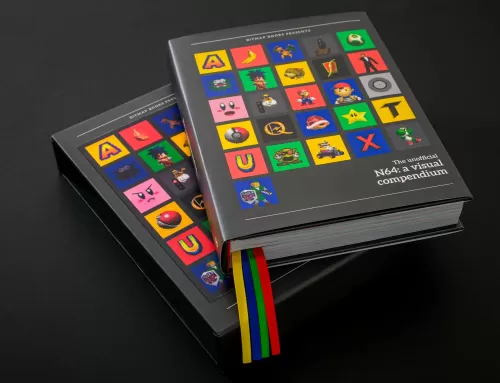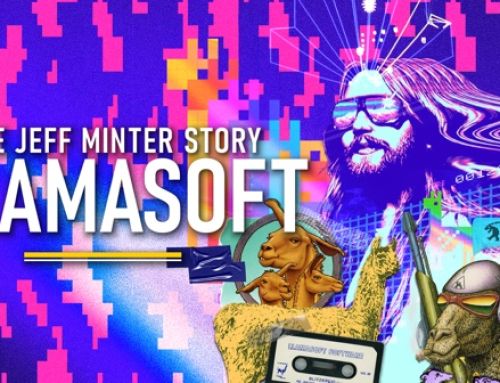X is for Xylophone, strangely

There are so many games to choose from these days and different platforms that it can be overwhelming deciding where to start. And, sometimes you simply want to delve into an old favourite or a series you have heard great things about but never played. Nothing wrong with it, no judging here. In fact, I am definitely guilty of spending many hours playing the old timers as much as the shiny new stuff. So, in this particular section, I will take the time to play a game of the past which could range from the NES era all the way to the Xbox 360/PS3 generation and share my thoughts with a rating out of five.

Racing games on the Nintendo 64 were common and ranged from all types but undoubtedly arcade future racer F-Zero X, sequel to the original F-Zero on the SNES, was one of the most exhilarating.
Developed and published in 1998 by Nintendo’s EAD department the game was only a partial success for the console (likely as it was released in the same year as some of the other massive Nintendo published titles such as The Legend of Zelda: The Ocarina of Time and Rare’s Banjo Kazooie). But speak to any fan of the series and you will only hear fervant passion. But does it still play well twenty-three years later? Having recently dug out my N64 with the game, I was delighted to dive back in and experience those high-octane thrills once more and answer that very question.
Firstly, I love the concept of the series – it’s fantastically ridiculous. Far in the future the wealthy elite of Earth have set up a new racing sport which allows all manner of intergalactic superheroes, super villains, bounty hunters, space merchants – ranging from humans, aliens, robots, the undead, mutants and even biomechanical dinosaurs – to race for money in hovercars which have evolved from Formula One. The winner receives plenty of cash and prestige and the losers left humiliated and bankrupt. Or dead.
One of the first things that struck me immediately on playing the game was the music. Specifically, the menu music on booting up the game is an energetic midi twang of electric guitar. The soundtrack also features remixed versions of the tunes from the original game and they have been produced with an edgier sound – in fact, between all the squealing riffs you would be forgiven for assuming someone had fired up a Metallica album. The mode/character select music in particular feels like the game is waiting for you to start head-banging and perfectly adds to the ‘90s ‘tude.

So, let’s delve into actual gameplay. The game sees you choose a racer from a potential thirty unique characters (once all unlocked) and compete in championships of six progressively harder races in which points can be accumulated with the goal of winning the gold cup at the end. There are three championships available at the beginning with a couple to be unlocked later after beating the initial three cups and races can be won by simply beating the competition fairly or by destroying their machines each race (much harder to do but very satisfying when successful). The game will also highlight your main points rival throughout the race to make it easier to target them if required.
The difficulty settings range from Novice, Standard, Expert and Master and the curve is perfectly judged. On initially racing on Novice you will find the game so easy you will think the AI opponents had sludge stuck in their exhausts but on notching it up to Expert your rival racer will be the reason you have to fork out another tenner for a new controller. It has taken pure perseverence and dedication to even attempt the Master difficulty.
The three cups you can compete in are the Jack, Queen and King cups (with an unlockable Joker cup) and the drip feed of unlockable racers and cups is again perfectly judged to keep you coming back. The later unlocked X Cup is a completely original track randomiser which can throw up all hell of weird and awful contortions and is a fantastic means to allow the game to have extra replayability once you have beaten everything else (not that beating the game will be done in a short spurt).
Similar to its predecessor, the tracks are all varied and interesting with each having their own quirks, such as loops, half-pipes, narrow lanes and massive jumps. Returning from the original game are names like Silence, Port Town, Mute City, Big Blue and White Lands and some of these have two or even three variations which tend to increase in difficulty.

Now a futuristic racing game would find itself trudging along in last place if it didn’t have a great sense of speed and in this regard Nintendo’s game has no issue. On its release, its lead developer Shigeru Myamoto was even quoted as saying some of the speeds reached would be up to 1,000 kilometres an hour (not bad).
However, the developers admitted that to meet such a near sensory overload with thirty racers onscreen and without any lag or severe drops in frame rate, the graphics had to be set to a low poly count. This was one of the main flaws which the game was noted for in critics reviews back in its day as the visuals are pretty sub-standard, bordering on ugly. This was an unusual feature for a Nintendo property as consumers had come to expect a certain ‘seal of quality’ with their games. As a result, the ship models are plain looking, the track environments are uninspired and the character sprites are embarrasingly blurry. Still noticable, but now that we are so far away from the N64 era (and, frankly, the majority of that generation has aged poorly graphically) that it doesn’t stand out quite as bad. Given the choice, I think they made the right one. Speed is key.
F-Zero on the SNES was bereft of content in that you could only control one of four racers (their names not even provided in-game but only known via character profiles in the instruction booklet). Captain Falcon was the main obvious hero character and would go on to become the mascot of the series. Dr. Stewart, Pico and Samurai Goroh were also established from the first game. However, the creators of F-Zero X were tasked with creating another 26 new racers and judging from the astounding character profile artwork it looks like Nintendo EAD had a fun time coming up with the designs and back-stories for each of the characters. In fact, I wouldn’t have been surprised if they were ripped out of a Marvel comic strip (Beastman, Black Shadow or Aquaman all spring to mind.) Some have much less interesting names such as Billy, Leon or Kate Alen but equally have really outlandish cartoony visuals which add to the sense that there is a deeper lore to the series. I love this aspect of the game as it makes me want to read into any fiction that could have been set during the timeline of the races.
On mentioning the ships actually, there is some depth too. Each ship has a weight to it and a set of parameters graded from A to E in terms of durability, grip and boost however on selecting your racer you also tweak the amount of downforce on your ship to either have more top speed or better acceleration but lower top speed. This adds some strategy to the choice of character; depending on the circuit or championship event in play, choosing a racer with a high top speed on a ‘twisty-turny’ track could be pretty disastrous as there wouldn’t be many opportunities to utilise the top speed. Likewise, on a fast track with little cornering you would struggle to pass anyone if you opt for better acceleration over top speed. On top of that you need to factor in the weight of the ship as I find on narrow tracks it is advantageous to choose the big heavy machines, hoping to take out my opposition by smashing into them. The more experienced with the game I became I started to really tweak the balance of the ship depending on each circuit and really appreciated this extra level of depth.

Features wise, aside from the main Grand Prix championship mode, multiplayer with two, three or four players and the standard Time Attack and Practice modes is the Death Race feature. This was unique to the series at the time and is a never-ending race which involves you trying to eliminate the other 29 remaining racers in the fastest time possible. The track layout is essentially a looping straight road but trying to beat your own time is pretty addictive and challenging.
Verdict – All in all, I had a great time coming back to this and can appreciate the impact this game had in particular to the futuristic racing genre. It’s definitely not a ‘looker’ as the visuals are lacking in detail but ultimately the choice to keep frame rate up was the right one as the action never stutters even when thirty racers are on-screen battling it out. Additionally, the sheer amount of content, modes and iterations to the original game is astounding and with its perfectly judged difficulty curve this is still a superb package over two decades later. It’s a high point in the series and fans of the genre should not miss out.
For an understanding on the thought process behind the Gamerhub review system, please check this page.





